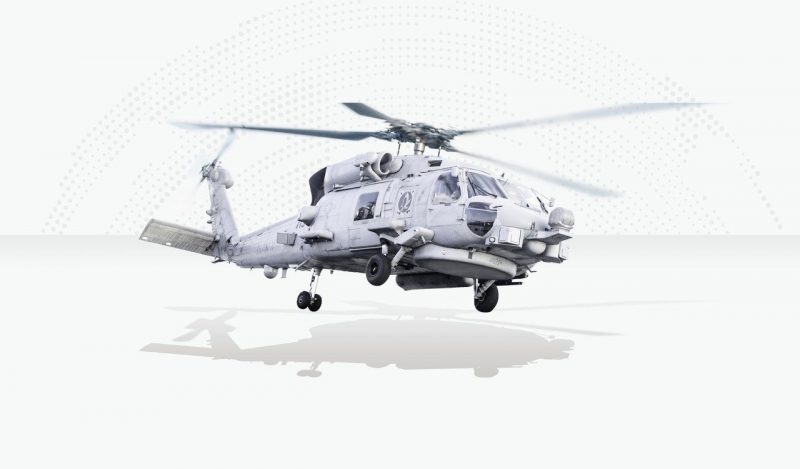The Indian Coast Guard (ICG) commissioning the latest Advanced Light Helicopter (ALH) Dhruv) Mk. III squadron in Bhubaneswar and Kochi marks a new chapter in the troubled helicopter’s journey, with experts observing significant improvements over its variants.
The Indian Navy meanwhile cautiously waits and watches after having bitterly criticized its previous iterations of Mark I and II for many technical, performance and design flaws.
Nevertheless, the ‘helo’ (as it is called in Indian Navy parlance) has its backers and remains a symbol of painstakingly developed national defense aerospace project. The most advanced variant of ALH will enhance maritime capabilities of force along West Bengal, Odisha and Kerala coast, said ICG officials.
This Maritime Reconnaissance and Coastal Security (MRCS) version manufactured by the state-run Hindustan Aeronautics Ltd (HAL) is equipped with a slew of the latest electronics and avionics – a nose-mounted Surveillance Radar, Electro-Optic Pod, Medical Intensive Care Unit, High-Intensity Search Light, Search and Rescue (SAR) Homer, Loud Hailer and a door-mount for medium/heavy machine gun.
Beginning with inducting three ALH Mk-III, the ICG is expected to induct 10 more by May 2022, with the contract with HAL meant for a total of 16, in line with the Atmanirbhar Bharat Abhiyan (Self-Reliant India Mission).
The twin-engine, multi-role, multi-mission new generation helicopter in the 5.5-tonne weight class is produced both in the skid and wheeled versions.
“Type-certified” for Military operations by the Centre for Military Airworthiness Certification (CEMILAC) and civil operations by the Directorate General of Civil Aviation (DGCA), the induction comes amidst the Indian Navy’s imminent procurement of the US-made MH-60R Romeo Multi-Role Helicopter (MRH) and ongoing Naval Utility Helicopter (NUH) programs.

The former is to replace the aging Sea King 42 Alpha/42 Bravo and the latter the equally antiquated yet robust Chetak (rechristened from the original French make as the Alouette III).
Dhruv HAL
Earlier, HAL secured a $45.2 million deal with Ecuador for Dhruv choppers. This was seen as a big milestone for India’s defense industry.
India’s Dhruv was positioned as a low-cost alternative to Western utility helicopters. Ecuador had bought seven Dhruv choppers from HAL after a stiff competition from Elbit, Eurocopter, and Kazan.
However, the joy was short-lived as four of the seven Dhruv advanced light helicopters crashed in separate incidents and Ecuador grounded the remaining ones and terminated the agreement.
Originally designed for the army, the Indian Navy began inducting the Dhruv Mk. 1 from 2003 onwards. “But a battery of issues ranging from an underpowered Turbomeca TM 333 2B2 turboshaft engine; conventional cockpit; cumber main rotor blade folding procedure and other performance issues plagued the helicopter,” said Commander KP Sanjeev Kumar (Retd), a former test pilot.
This kept the navy from going in for more and continued flying the Chetaks. The helicopter was seen wanting in a fundamental naval requirement of being able to operate from and fit onto warship decks.
It now has ‘Shakti’ (Safran Ardiden 1H1) turboshaft engine; a full glass Integrated Architecture Display System (IADS) glass cockpit and a slew of new systems installed by the HAL’s Bengaluru-based Rotary Wing Research and Design Center (RWRDC).
IN pilots have long flogged the HAL for poor workmanship, lackadaisical engineering and maintenance hygiene and sometimes just outright shirking of responsibility. This has led to the ALH becoming one of the many testy issues between the services and HAL in particular and Defence Public Sector Undertakings (DPSU) in general.
Other pilots defend the HAL, citing concession on account of inexperience with advanced defense aerospace projects and, the absence of a high-technology manufacturing base that has a consequence on the quality of components.
Primarily designed for the Indian Army and the Indian Air Force (IAF), the two are rather very happy with the helicopter, with the former actively using it in High Altitude forward locations in Ladakh for challenging medical evacuation and sometimes disaster relief missions.
Wing Commander Anil Bhambhani (Retd), HAL test pilot, points out how the troubled variants operated by the IN were the initial Mark 1 Limited Series Production (LSP) batches, whose problems were corrected in the subsequent Mark II, III and IV (Rudra) variants.
“This was the first helicopter designed in India; we as a nation had no skill set or knowledge, HAL by itself had no history in designing helicopters and it had taken Germany’s MBB as a partner for the design…we were just learning to take baby steps,” Bhambhani adds.
The government too seems to have agreed with this line of reasoning and included the NUH program as a part of its third positive indigenization list, which prohibits importing or jointly developing/manufacturing defense platforms with foreign Strategic Partners (SP).
The procurement will now be made for 60 NUHs under the ‘Buy-IDDM’ category of the Defence Acquisition Procedure (DAP) 2020. An October 2021 IN-HAL joint study exploring modifying/enhancing the Dhruv Mk. III played a part in influencing the ‘Buy-IDDM’ route.
The changes include optimizing it to 5.7 tonnes; reducing the empty weight of lightweight avionics and mission sensors; higher payload capability up to 600 kg for deck operations; foldable two-segment blades to be able to accommodate themselves on ships and hangars, and; an Aircraft Ship Integrated Secure and Traverse (ASIST) interface.
- Parth Satam is a Mumbai-based journalist who has been covering India’s defense sector for more than a decade. He maintains a keen interest in defense, aerospace and foreign affairs and can be reached at satamp@gmail.com
- Follow EurAsian Times on Google News